There’s cause for alarm when you notice browning at the plant’s tips; if you don’t treat the problem quickly, it can spread throughout the entire indoor plant. What you need to do to get your houseplants back on the green track is outlined below.
What Can Cause Indoor Plants to Have Brown Tips?
Inconsistent Watering Schedules
The way you water your plants is usually the culprit when the tips of their leaves become brown. Damaged by lack of water, plants become wilted and their leaves turn brittle and eventually fall off.
The leaves also become brown and yellow from overwatering. But there is a distinction between these two situations: an overwatered plant has soft, mushy, and limp leaves, whereas an underwatered plant has crinkly, dry leaves.
Cure
If you’re worried about overwatering, try letting the soil dry up a little in between waterings. The soil should be allowed to dry to the touch before watering again. If the plant has wilted significantly, remove it from the pot, clip the rotting roots, spray the remaining roots with fungicide, and then repot it in new potting mix. Reduce watering for a few days.
For Underwatered Plant: The plants’ stress response, visible as browning leaf tips, is a direct effect of inconsistent hydration. To revive your plant, simply water it thoroughly.
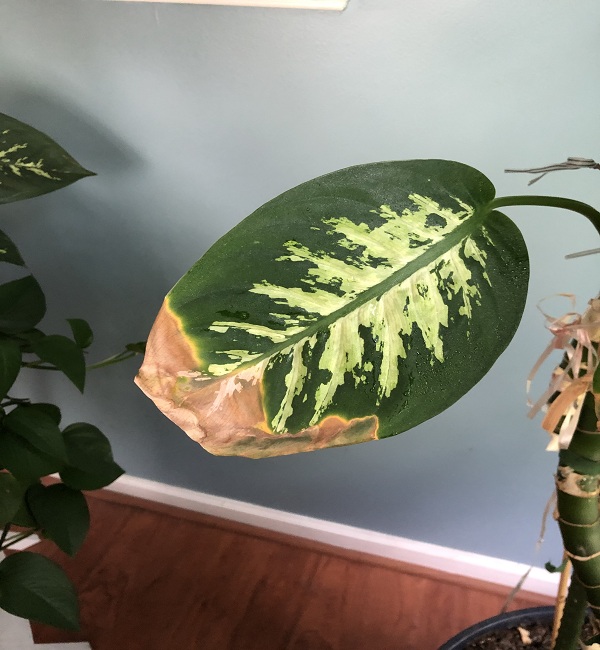
Too Much Sunlight
Too much direct sunlight can cause the plant’s leaves to brown and burn at the tips and margins. Further, in the long term, it might entirely scorch the plant life.
Cure
Be sure the plants are not left in direct sunlight for too long. Avoid exposing houseplants to direct afternoon sunlight. As an added precaution, move delicate plants away from any south or west-facing windows in your home.
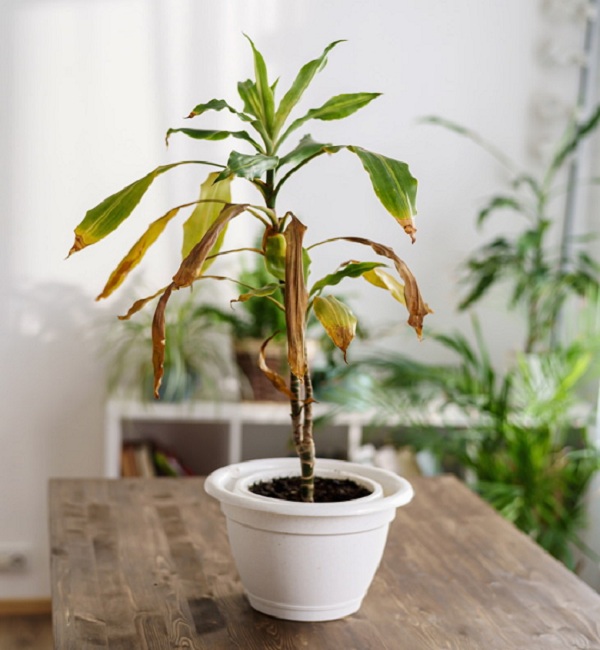
Lack of Humidity
Browning of the leaf tips is another symptom of low humidity, which can occur throughout the winter or in the summer when the air conditioner is on in warmer climates. Most houseplants prefer humid conditions; dry indoor air can damage their leaves.
Cure
In the short term, this problem can be fixed by misting the plants. Humidity can also be increased by grouping houseplants together or by placing each plant on a saucer filled with water.
The most effective strategy involves the use of a humidifier and a humidity meter.
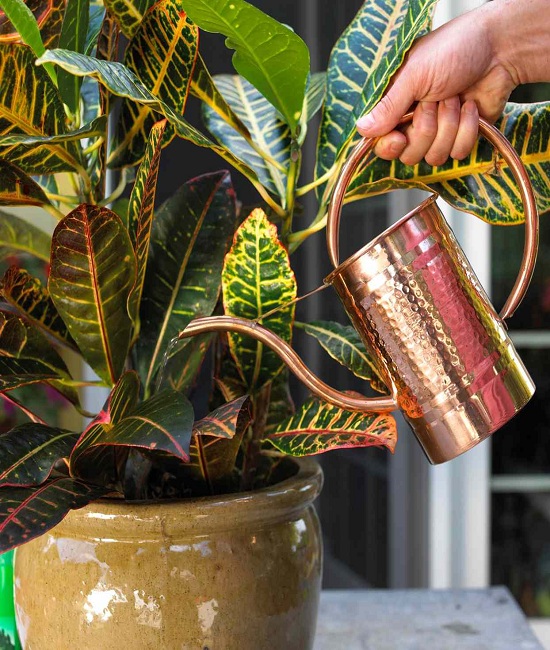
Lack of Nutrients
The browning of the tips may indicate a shortage in Magnesium, Calcium, Iron, or Phosphorus. The plant’s appearance could also change, possibly becoming limper and wilted.
Cure
If you’re using a fertilizer that claims to contain micronutrients, double check that you’re giving the plant the right amount. The label should have the suggested dose.

Soil Salt Buildup
Indoor plant browning is often brought on by overfertilization. Browning of the plant’s tips is a symptom of water deprivation, which is caused by salt accumulation blocking root absorption of water and causing root burn.
In general, less is more when it comes to fertilizing houseplants because their growth is stunted by the lack of light they receive inside.
Cure
A weak, infrequent feeding schedule for houseplants can help prevent this problem. If this has already occurred, you can flush the soil by continuously watering the plant to allow the excess nutrients to drain away.

Poor Air Circulation
According to a study conducted in Japan, the net photosynthetic rate of tomato seedlings in a greenhouse can be altered by adjusting the air flow. In a similar vein, poor ventilation can cause the photosynthesis in your houseplants to slow down, leading to yellow blotches and brown tips on the leaves.
Cure
The necessary breeze can be generated by using either a ceiling fan or an oscillating fan. Leave some room around each plant and avoid crowding them together. It’s recommended that plants be kept near a window or entrance that allows for plenty of fresh air flow.
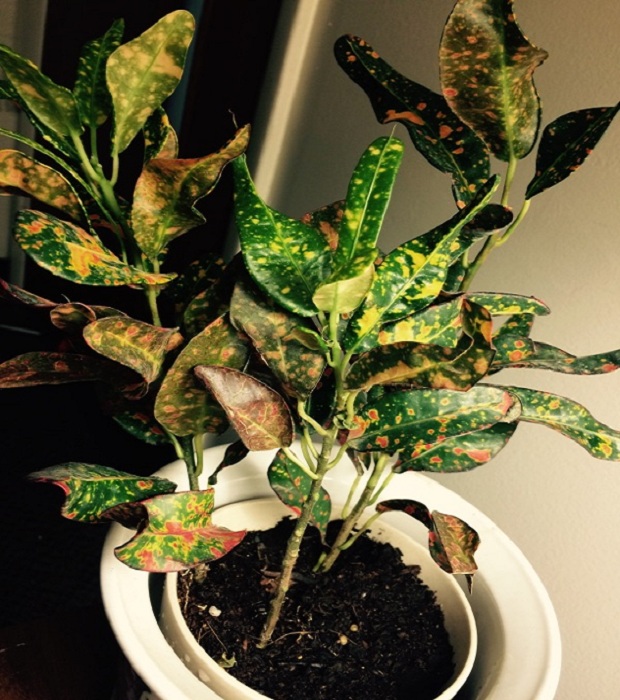
Cold Damage
Unfortunately, many common houseplants cannot tolerate temperatures below 65 degrees. Placing the plant in an area where it will be exposed to cold drafts of air, such as a windowsill or a cooling vent. This can produce browning at the leaf edges and tips due to cell punctures.
Cure
In the winter, if you see the tips of the leaves turning brown, you should try to increase the humidity and warmth around the plants.
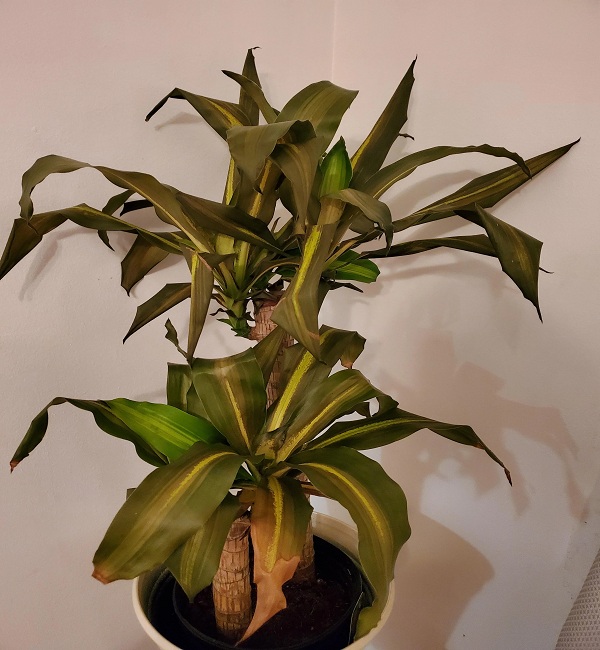
Away from Windowpanes
There is an uncomfortable temperature difference between the inside and outside due to the window’s glass surface. If the leaves come into contact with the glass, they may become brown.
Cure
When the weather outside is severe, it’s extremely important to make sure leaves aren’t touching the glass in your windows.
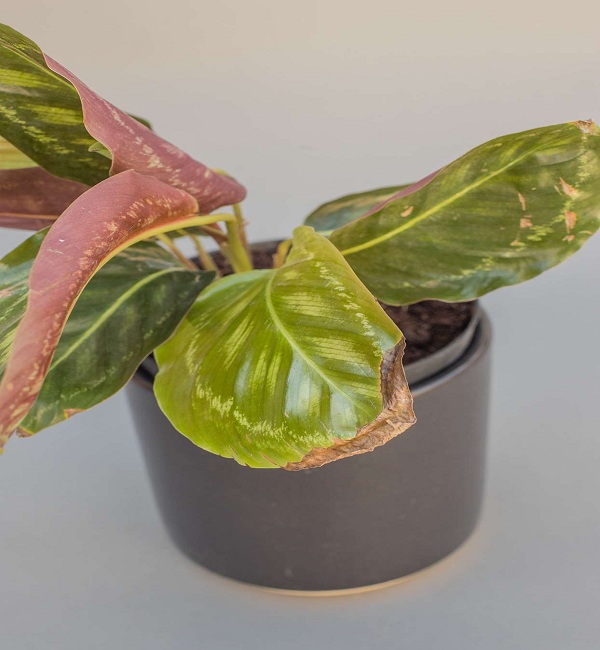
Tap Water
Chlorine, fluoride, and other minerals like calcium, which can stunt plant growth, could be found in excessive amounts in the public water supply. Over time, these minerals accumulate in the soil, covering the roots and preventing the plant from taking in the necessary nutrients and water, resulting in the browning of the leaf tips and the appearance of white patches. Browning of leaf tips is another symptom of chlorination poisoning.
Cure
If the problem is caused by chlorine in the water, letting the tap water hang out for 24 hours or overnight should do the trick. When possible, use filtered water, reverse osmosis water, or cooled boiled water.
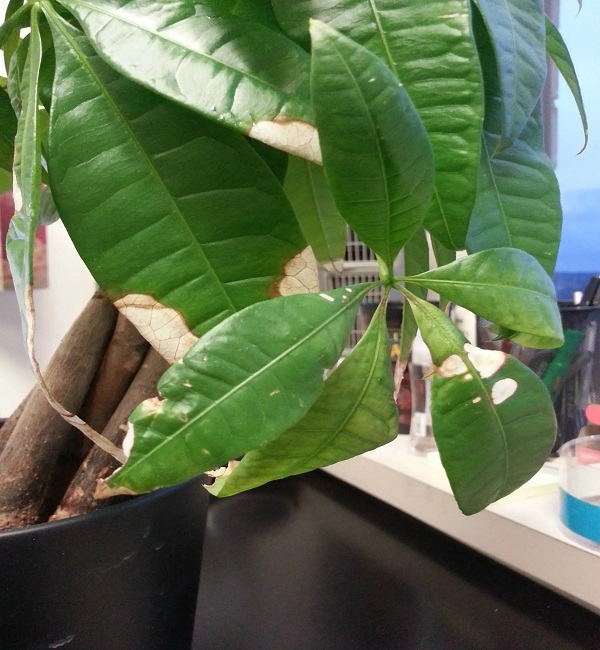
Pesticides
Using certain powerful chemical pesticides can induce a chemical burn on the foliage and roots, which can lead to browning and death of the leaf tips. Taking care when addressing bacterial and fungal infections is essential.
Do a patch test on several leaves before putting on all plant parts; this is especially important if you are using a do-it-yourself homemade pesticide formula that contains an excessive amount of dish soap or oil.
Brown spots on leaves may be caused by spider mites or other pests. Diseases caused by fungi, such as bacterial leaf spots and powdery mildew, are another contributing factor.
Cure
To protect the plants, don’t use any toxic chemical pesticides. Consistently invest in high-quality products.

